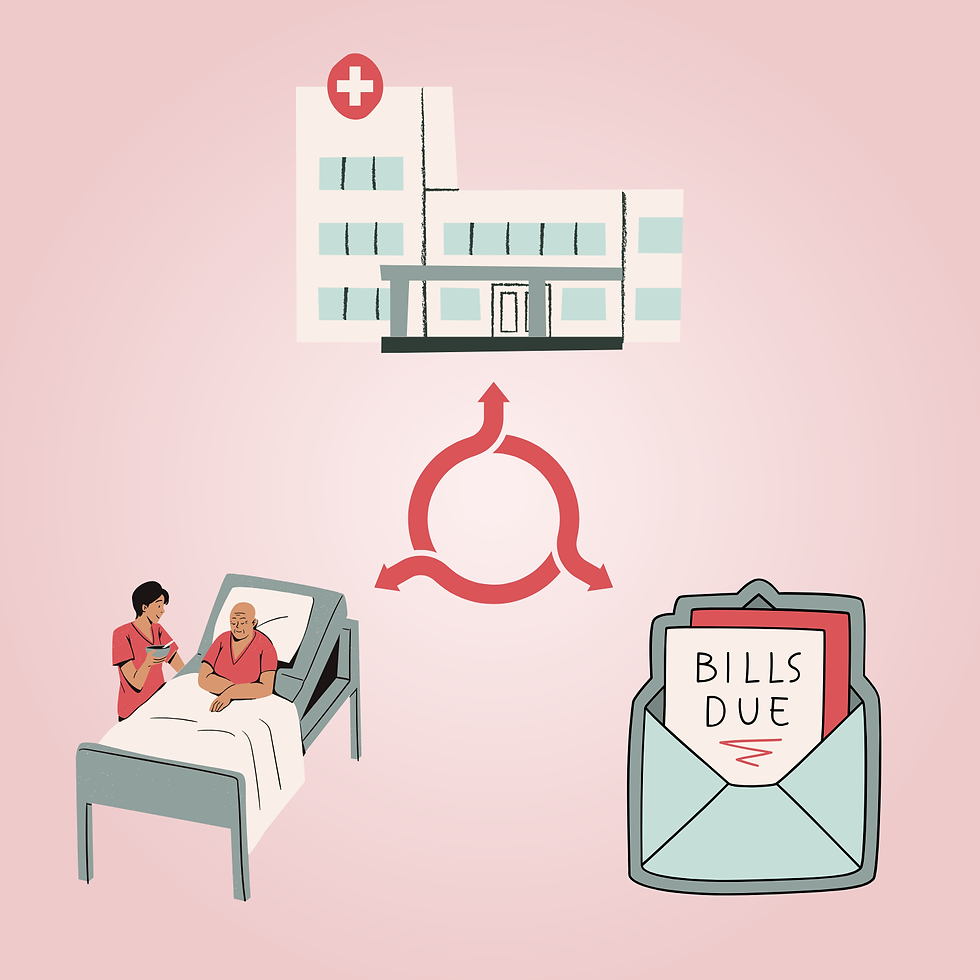America’s Two Epidemics: COVID-19 and Opioids
- Alex Pieroni
- Dec 7, 2021
- 2 min read
Throughout the COVID-19 pandemic, the CDC has continued to monitor trends in other public health crises. A study conducted by the Recovery Research Institute used CDC data to find that drug overdose deaths unexpectedly increased during the first five months of the pandemic. May 2020 was the deadliest month of these five, with an increase of 58% from May 2019. Poor areas and areas without ample access to harm reduction services disproportionately suffered.

This data highlights one of the many disparities and failures in the healthcare system in the COVID-19 era. With emphasis being placed on developing advanced care for COVID-19 patients, many patients who require active intervention are dealing with larger wait times and are becoming more skeptical of hospitals.
In the past year, approximately 100,000 Americans died of drug overdoses. These overdoses are most often caused by fentanyl and synthetic opioids. The data shows that many Black, Latinx, and Native American communities have exhibited large relative increases. The rate of increase across the country is unprecedented. There is also a concerning amount of young deaths caused by opioids.
A major cause of this increase is an impact of the pandemic felt by all: social isolation. With the stressors of job insecurity, rates of homelessness increased. While there is not good statistical data on how homelessness increases drug use, homeless populations are more likely to practice unclean and more dangerous drug use. Drug users also reported using substances in isolation far more often throughout the pandemic. More often leads to an increase in tolerance, leading to possible lethal doses.
While the quantity of a drug can cause an overdose, the contents of the drug are a far more likely cause. Fentanyl is a synthetic opioid, meaning that it has a far higher potency than many street drugs. A lethal dose is considered around 2mg, but the scarier fact is that many drugs, especially unregulated opioids, are laced with fentanyl. In fact, a study by the DEA investigated counterfeit pills and found that 42% of pills tested within this margin and contained a possibly lethal dose. Fentanyl is mixed with other drugs to increase their potency. Without any regulation over this market, and with less abundance of suppliers throughout COVID-19, the likelihood of a lethal fentanyl dose killing a drug user who takes what would be a normal dose of an opioid increases.
Substances such as opioids disproportionately impact communities that were hit hardest by COVID-19. However, there have been some benefits of the pandemic in harm reduction. Public health must address the issues of the opioid epidemic by expanding resources and increasing access to medication-assisted treatment. Medicaid expansion increases coverage for many low-income patients, which has been correlated to lower mortality outcomes for patients. Harm reduction centers have been able to limit the negative impact of addiction. Harm reduction services also provide needle and syringe programs, which allow for intravenous drug users to use without risk of infection.
With the increase of COVID-19 cases, it doesn’t look like the crisis of addition is going anywhere anytime soon. It’s time that public health officials ensure the best support possible for those at risk of drug overdose.
Edited by: Olivia Ares
Graphic Designed by: Sibani Ram
References
https://www.recoveryanswers.org/research-post/unprecedented-increase-overdose-deaths-covid-19-substantial-regional-variation/
https://www.commonwealthfund.org/publications/podcast/2021/jun/its-really-truly-everywhere-how-opioid-crisis-worsened-covid-19
https://www.dea.gov/resources/facts-about-fentanyl
https://www.commonwealthfund.org/blog/2021/spike-drug-overdose-deaths-during-covid-19-pandemic-and-policy-options-move-forward



Comments